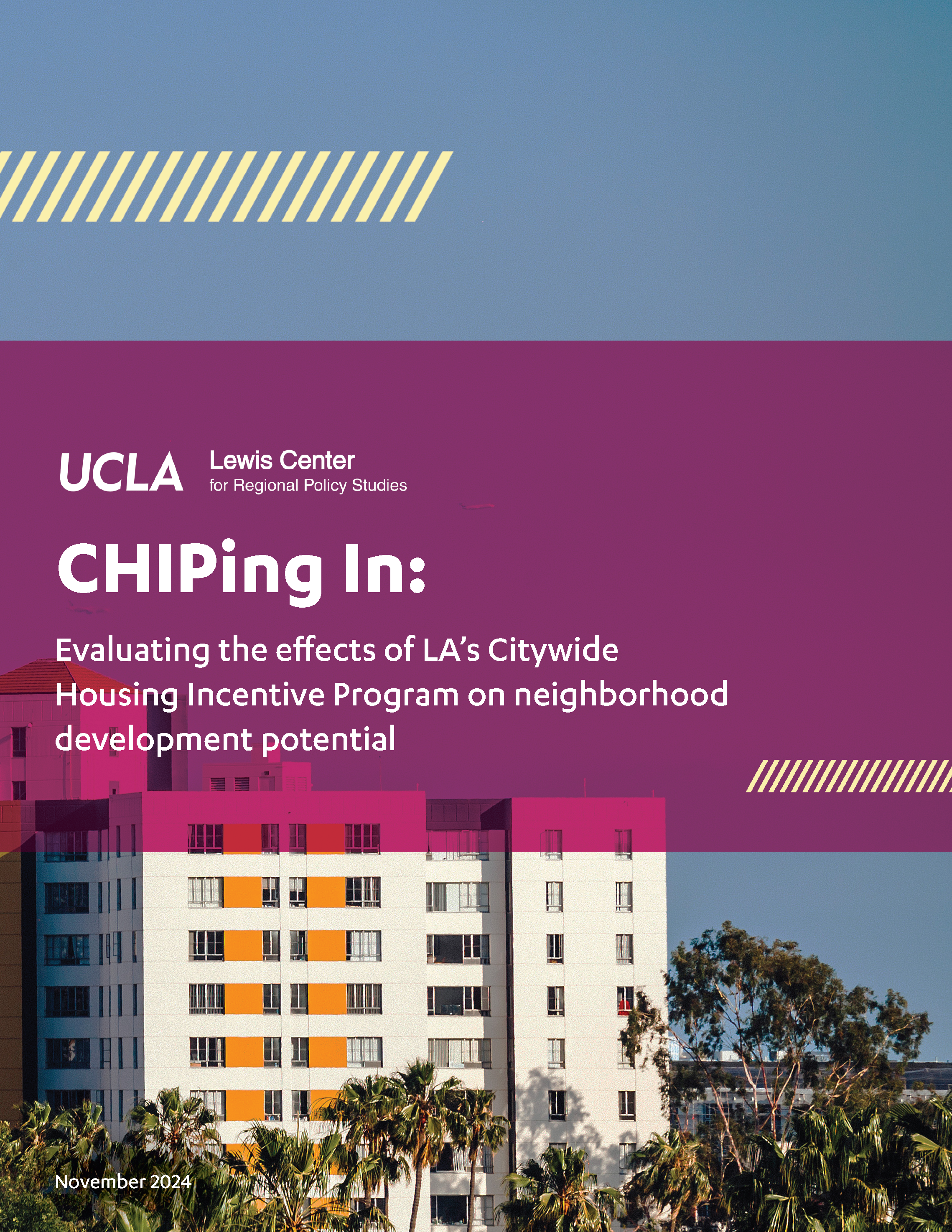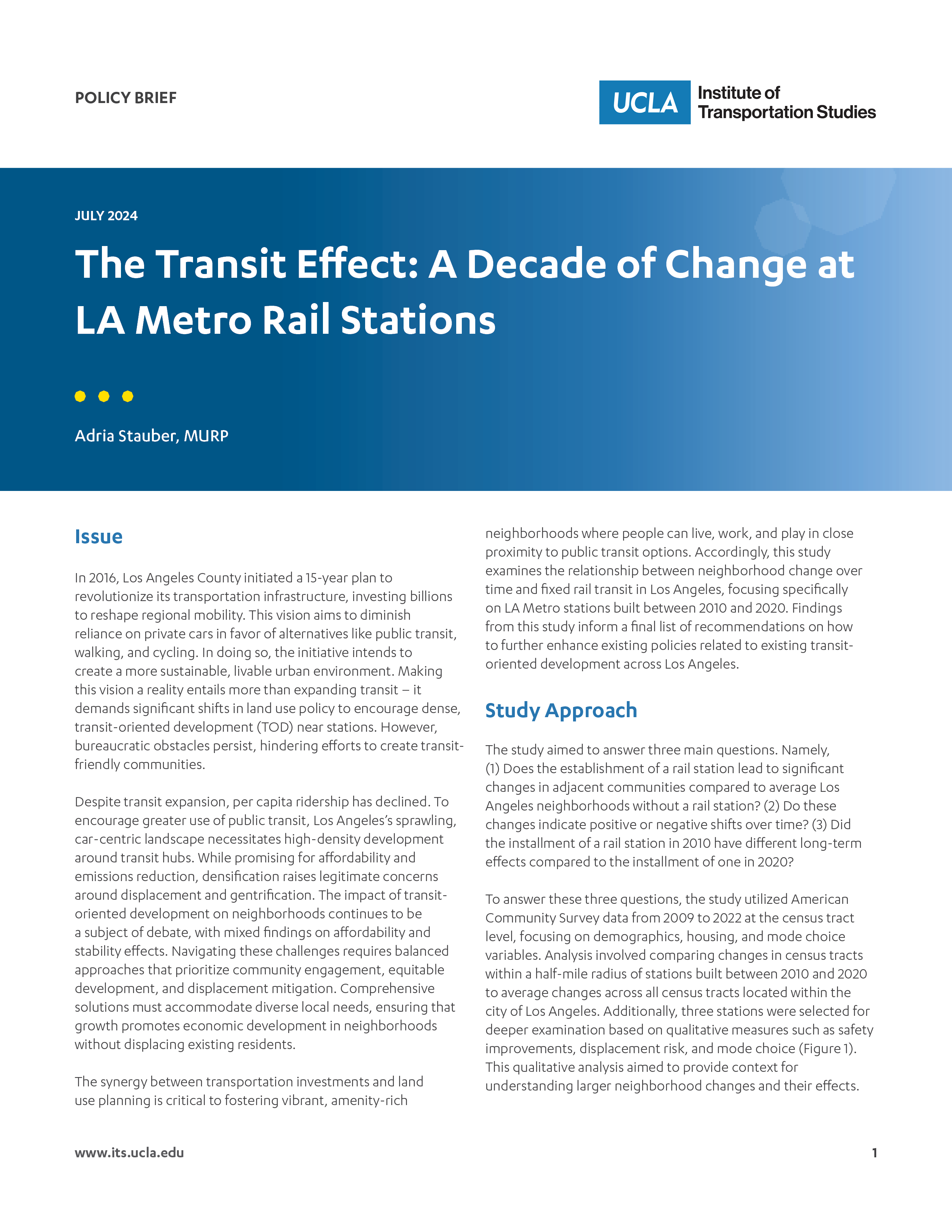Increasing Infill Production
Infill housing is housing built on previously developed urban land, typically to higher density than the land’s previous use. Increasing infill production can improve housing affordability by providing people with smaller and less land- and capital-intensive housing options, by increasing the supply of housing relative to demand, and in some cases by directly producing units restricted to lower-income households (e.g., through density bonus policies). Infill may also reduce household expenditures by encouraging lower-cost transportation, such as transit and walking, and advances other priorities including environmental sustainability, public health, government budget and infrastructure resiliency, and more. Dense, walkable, transit-oriented communities are sharply undersupplied in Southern California and across the U.S., and infill can help fill these gaps.
Lewis Center Housing Initiative staff and affiliates study the policies that limit housing production directly (e.g., zoning regulations, minimum parking requirements) and indirectly (e.g., rent control, entitlement and permitting processes), and the reforms that can increase infill production in communities across the region. We are particularly interested in incentives and barriers to building lower-cost multifamily housing, and how efforts to increase housing supply for specific populations may exacerbate overall housing scarcity and unaffordability. We also explore how cities balance housing production and supply with other priorities including affordable housing preservation, infrastructure and service needs, and household and community stability.
Other Research Areas
Publications
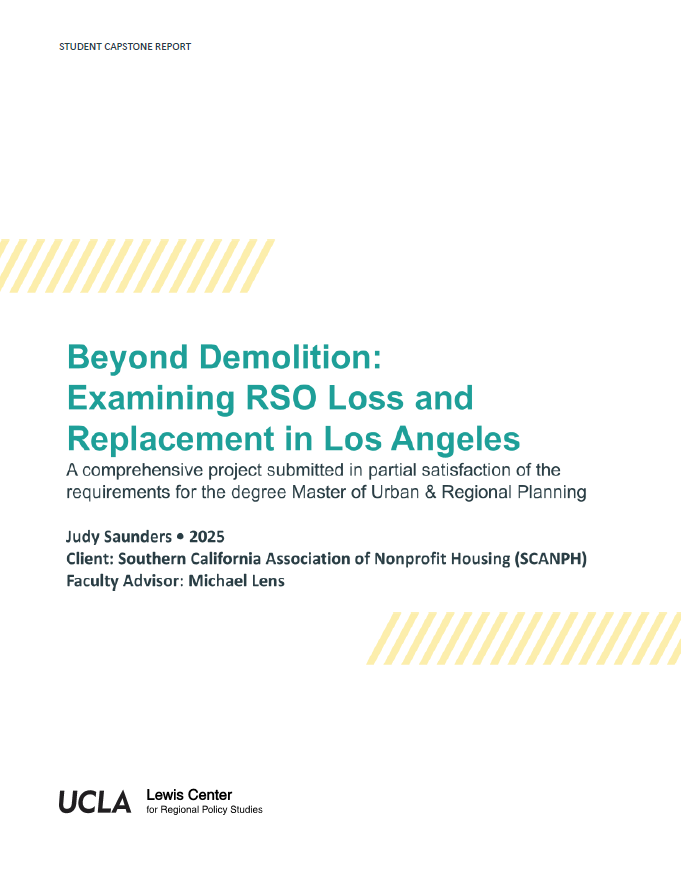

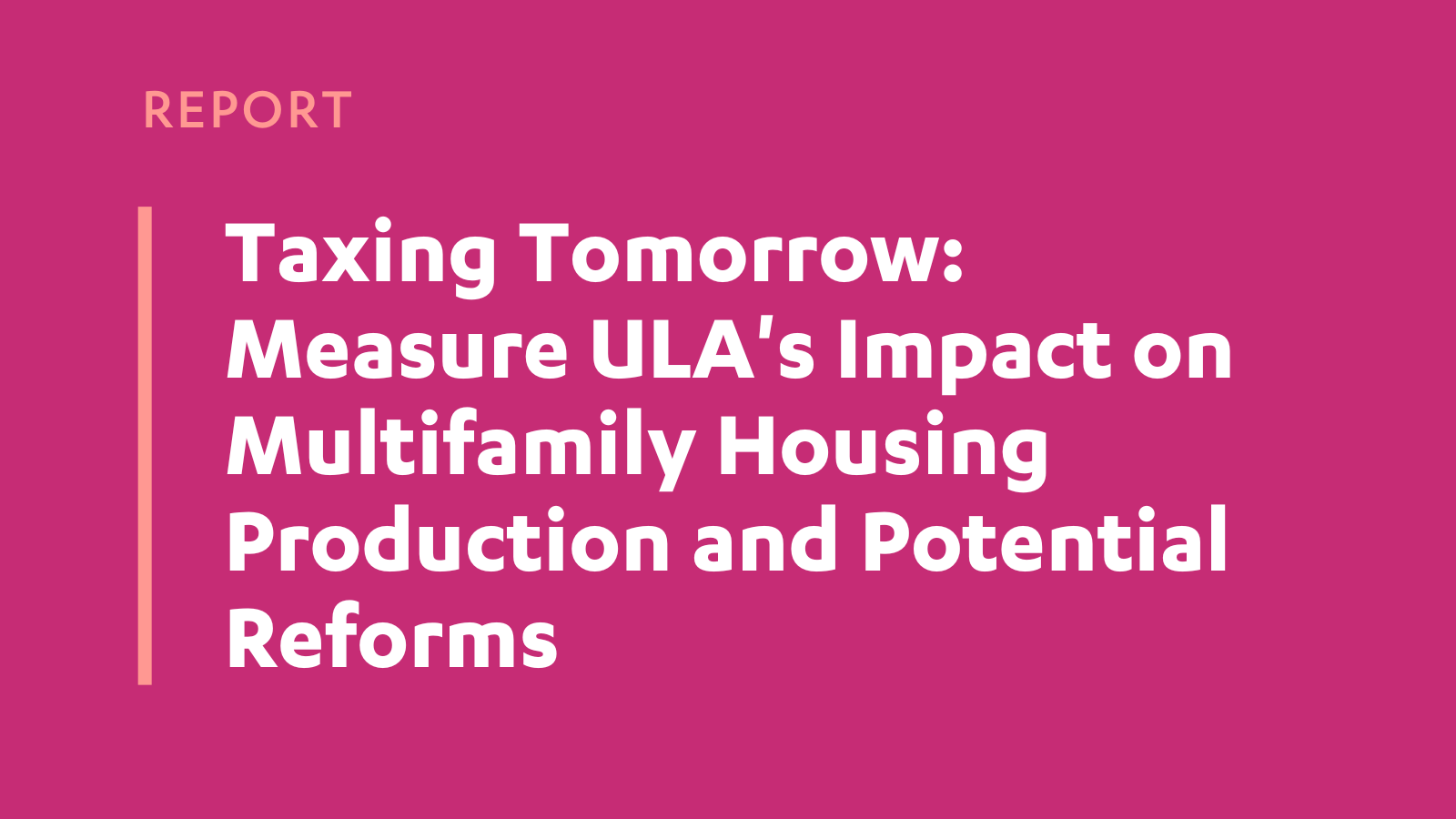

Report • 2025
Taxing Tomorrow: Measure ULA's Impact on Multifamily Housing Production and Potential Reforms
Projects
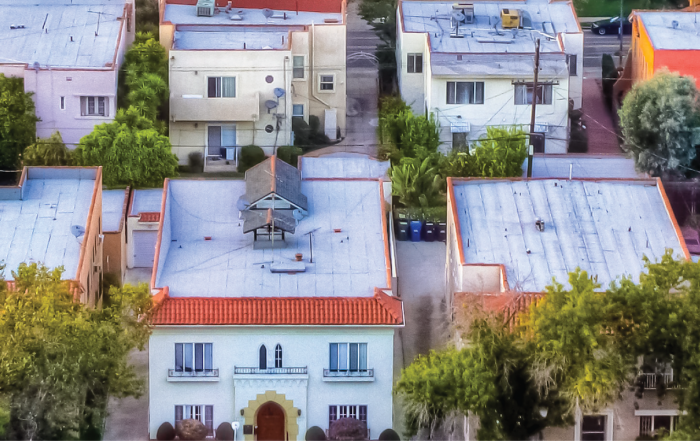
Housing Initiative | 2022
At any given moment, thousands of Angelenos experience homelessness, but many thousands more teeter on its brink, living precariously in the region’s unforgiving housing market. This two-year project will evaluate these conditions through a parcel-level, data-oriented lens.
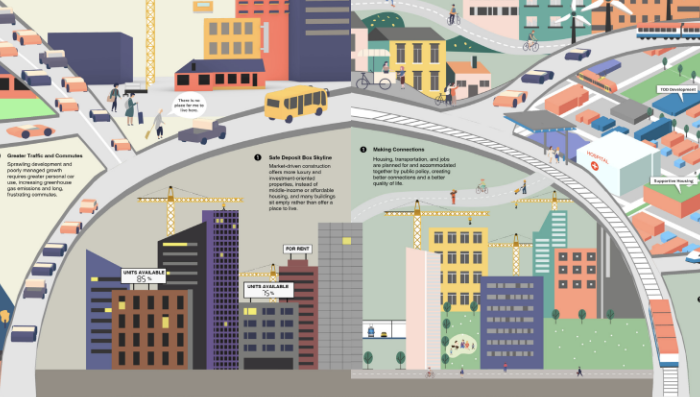
Housing Initiative | 2021
The state has spent decades allowing its housing problems to worsen, and it will likely take decades of action to solve the resulting crisis. All of this contributes to a grim feeling about California’s future housing trajectory.


